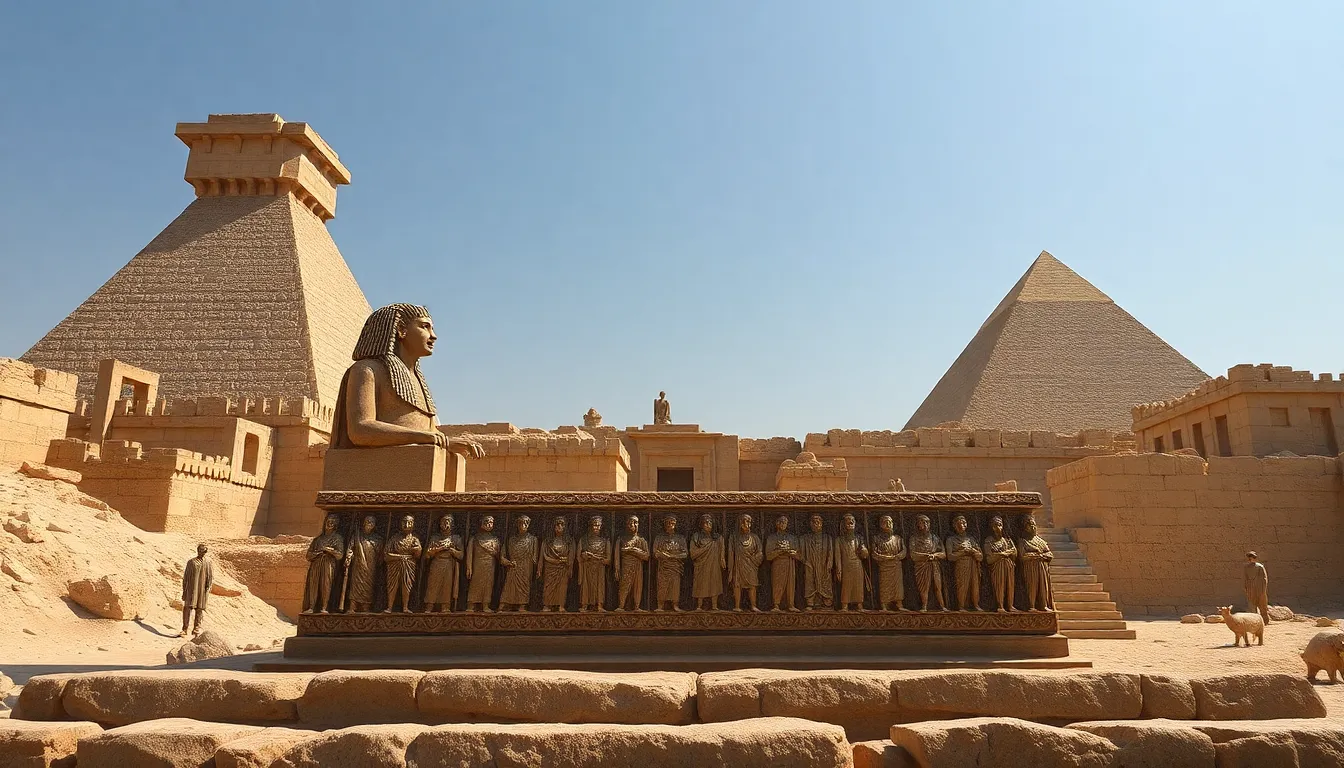The Importance of Funerary Texts in Egyptian Society
I. Introduction
Funerary texts are a collection of ancient Egyptian writings that were inscribed or included within the burial contexts of the deceased. These texts served a variety of purposes, ranging from spells and prayers to instructions for navigating the afterlife. Their significance in ancient Egyptian culture cannot be overstated, as they reflect the society’s beliefs about death, the afterlife, and the divine.
This article aims to explore the historical context, types, functions, cultural significance, artistic relationships, and modern perspectives surrounding funerary texts in ancient Egypt.
II. Historical Context of Funerary Texts
Funerary texts evolved significantly over the millennia, beginning with the Pyramid Texts of the Old Kingdom (circa 2686–2181 BCE) and culminating in the more accessible Book of the Dead during the New Kingdom (circa 1550–1070 BCE). Each phase of Egyptian history brought with it changes in funerary practices and beliefs.
Key periods include:
- Old Kingdom: The Pyramid Texts, the earliest known religious texts, were inscribed in the burial chambers of pharaohs.
- Middle Kingdom: The emergence of Coffin Texts, which democratized access to funerary knowledge for non-royal individuals.
- New Kingdom: The Book of the Dead, a compilation of spells and illustrations meant for a broader audience, became prominent.
The development of these texts was deeply intertwined with the religious and mythological beliefs of the Egyptians, which emphasized the journey of the soul after death and the importance of maintaining order in the afterlife.
III. Types of Funerary Texts
Funerary texts can be categorized into several distinct types, each serving specific functions:
- Pyramid Texts: The oldest religious texts, primarily found in the pyramids of pharaohs, containing spells and prayers intended to aid the king’s journey in the afterlife.
- Coffin Texts: Emerging in the Middle Kingdom, these texts were written on coffins and provided guidance for the deceased, allowing all social classes to access the afterlife’s knowledge.
- The Book of the Dead: A collection of spells, prayers, and illustrations designed to guide the deceased through the afterlife, providing insight and protection against various dangers.
- Other Texts and Inscriptions: Various other texts, such as the Amduat and the Litany of Ra, also played a role in funerary practices, often included in tombs or on papyrus scrolls.
IV. Functions of Funerary Texts
The primary functions of funerary texts can be summarized as follows:
- Guidance for the Deceased: Funerary texts provided essential instructions and spells to help the deceased navigate the afterlife, ensuring a successful journey to the Field of Reeds.
- Protection: These texts contained spells designed to protect the deceased from malevolent forces and dangers encountered in the afterlife.
- Ritualistic Roles: Funerary texts were integral to various ceremonies and rituals, reinforcing the importance of the afterlife in Egyptian culture.
V. Cultural Significance of Funerary Texts
Funerary texts reflect the ancient Egyptians’ beliefs and values regarding death and the afterlife:
- Beliefs About Death: They illustrate the Egyptians’ views on immortality, the soul’s journey, and the importance of living a virtuous life.
- Social Status and Identity: Funerary texts often indicated the social status of the deceased, with elaborate texts and inscriptions being reserved for the elite.
- Cultural Heritage: These texts serve as invaluable records of ancient Egyptian language, mythology, and culture, preserving knowledge for future generations.
VI. Funerary Texts and Art
The relationship between funerary texts and visual imagery in tombs is a significant aspect of Egyptian burial practices:
- Visual Imagery: Texts were often accompanied by elaborate illustrations that depicted the deceased’s journey and the gods’ assistance.
- Iconography and Symbolism: Common symbols, such as the ankh (symbol of life) and the scarab (symbol of resurrection), frequently appeared in conjunction with funerary texts, enhancing their meanings.
- Case Studies: Notable tombs, such as that of Tutankhamun and the Tomb of Seti I, contain rich examples of how funerary texts and art work together to convey messages about the afterlife.
VII. Modern Perspectives on Funerary Texts
In contemporary archaeology, funerary texts are crucial for understanding ancient Egyptian society:
- Archaeological Findings: Excavations have revealed numerous texts that provide insights into the religious practices and beliefs of ancient Egyptians.
- Translation Challenges: Scholars face difficulties in interpreting and translating these texts due to their complex language and symbolic meanings.
- Contemporary Relevance: Funerary texts continue to spark discussions about death, spirituality, and the afterlife in modern contexts, highlighting their enduring legacy.
VIII. Conclusion
In summary, funerary texts hold immense importance in ancient Egyptian society, reflecting their beliefs about death and the afterlife, providing guidance for the deceased, and preserving cultural heritage. The evolution of these texts from the Pyramid Texts to the Book of the Dead illustrates the rich history of Egyptian funerary practices.
The lasting impact of funerary texts on our understanding of ancient Egypt is profound, revealing insights into their complex worldview. Further research and exploration of this rich topic will undoubtedly continue to deepen our appreciation for the intricate beliefs and practices surrounding death in ancient Egypt.




